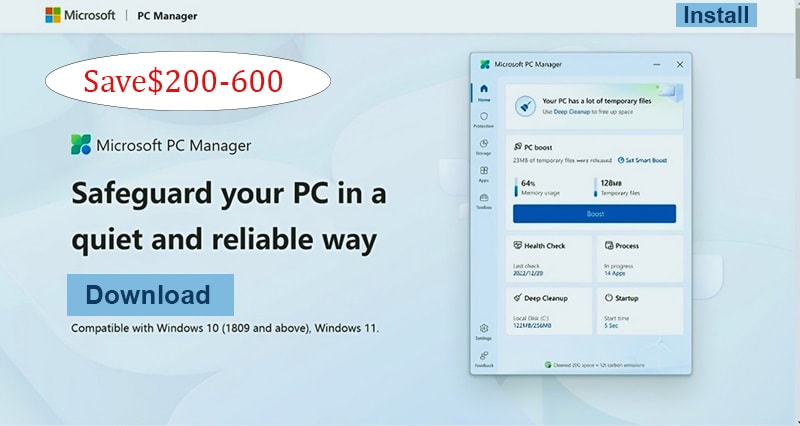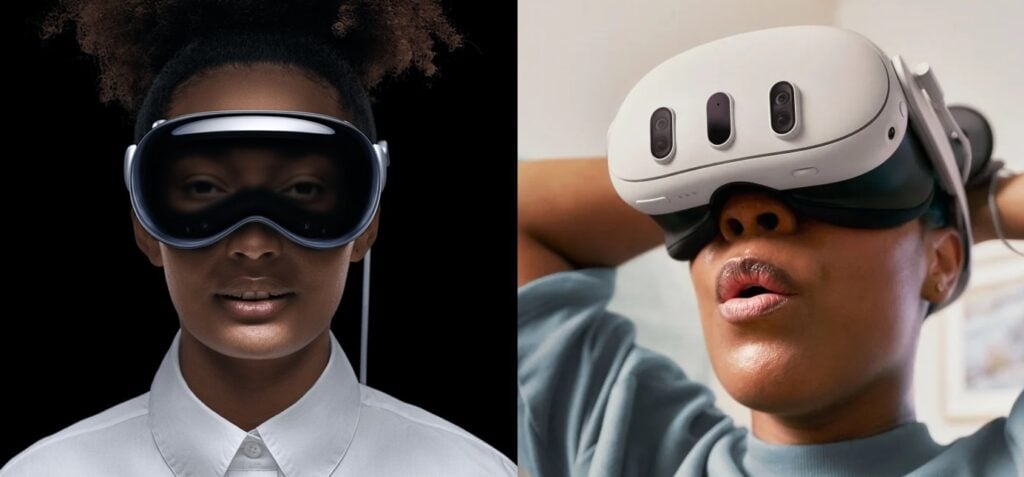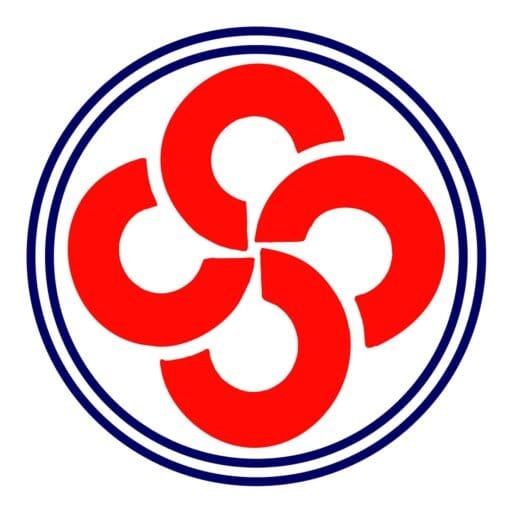Welcome to our guide to the best 3D printers for beginners! Did you know that the 3D printing industry is projected to reach a market value of $55.8 billion by 2026? With such rapid growth, it’s no wonder that more and more people are interested in 3D printing. Whether you’re a hobbyist, an artist, or simply curious about this revolutionary technology, finding the right 3D printer for beginners can be a daunting task.
When choosing a 3D printer as a beginner, there are a few key factors to consider. Ease of use, reliability, and support are crucial to ensuring a smooth printing experience. That’s why we have curated a list of the top choices for easy 3D printing, considering factors such as setup, software, print quality, repairability, and community support.
One important thing to note is that the Flashforge Finder, which used to be a popular choice for beginners, may not offer the same level of features and capabilities as newer models. As technology advances, newer options have emerged, providing improved functionality and affordability.
Moreover, budget is always a consideration for beginners. The good news is that there are many excellent 3D printers available for beginners that won’t break the bank. With prices ranging from under $200 to around $700, there’s something for every budget.
So, if you’re ready to embark on your 3D printing journey, let’s dive into our top choices for the best 3D printers for beginners and find the perfect one for you!
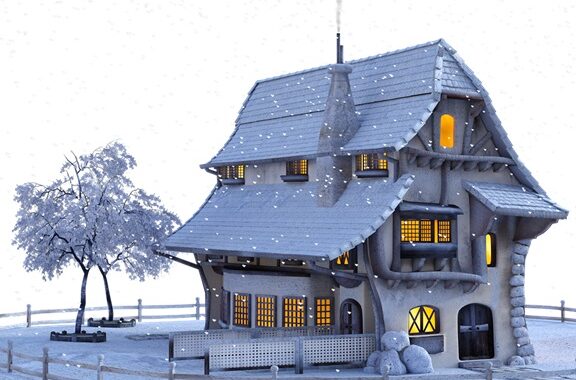
Key Takeaways:
- Choose a 3D printer that is easy to use, reliable, and well-supported.
- Consider factors such as ease of setup, bundled software, appearance and accuracy of prints, repairability, and company and community support.
- Budget is an important consideration, with many beginners’ 3D printers priced under $1000.
- The Flashforge Finder may not offer the same features and capabilities as newer models.
- Explore our top picks for the best 3D printers for beginners and find the perfect one for your needs.
What Makes a Good Beginner’s 3D Printer?
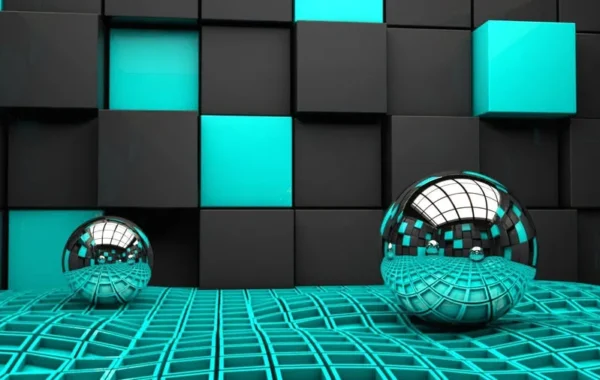
When choosing a 3D printer for beginners, certain qualities make a printer ideal for users new to the world of 3D printing. A beginner’s 3D printer should prioritize ease of use, reliability, and excellent support. These factors can greatly contribute to a positive and successful printing experience for beginners.
One of the key features of a beginner-friendly 3D printer is its ease of use. Beginner-friendly 3D printers are equipped with intuitive interfaces and straightforward controls, allowing users to navigate the printing process with ease. They often come with pre-configured machine feedback, automation features, and presets that simplify the printing process and minimize the learning curve. This makes it easier for beginners to experiment with 3D printing basics and achieve the desired results.
Reliability is another crucial aspect when selecting a beginner’s 3D printer. Reliable printers perform consistently, ensuring the prints turn out as expected each time. They can handle different materials, allowing beginners to explore various filaments and create a wide range of objects. A reliable printer provides a stable printing experience, giving beginners the confidence to experiment and learn.
In addition to ease of use and reliability, a good beginner’s 3D printer should offer excellent support. This includes helpful documentation, tutorials, and a responsive customer service team. A supportive community is also important, as it provides a platform for beginners to seek assistance, share experiences, and learn from other users. A strong support system can make a significant difference for beginners, helping them overcome challenges and progress in their 3D printing journey.
By considering these factors and prioritizing easy-to-use 3D printers that cater to beginners’ needs, users can find a printer that aligns with their goals and allows them to explore the exciting world of 3D printing with confidence and ease.
For a visual representation of the features to look for in a good beginner’s 3D printer, refer to the table below:
| Feature | Description |
|---|---|
| Easy-to-use Interface | An intuitive interface that simplifies the operation and control of the printer. |
| Reliable Performance | A printer that consistently produces high-quality prints and can handle various materials. |
| Excellent Support | Comprehensive documentation, tutorials, responsive customer service, and a supportive community. |
With these features in mind, beginners can decide when selecting a 3D printer that best suits their needs.
Factors to Consider When Choosing a Beginner’s 3D Printer

When it comes to choosing a beginner’s 3D printer, there are several factors to consider that can help you make an informed decision. While budget is an important consideration, it’s also vital to examine other aspects of the printer that can affect your overall experience and the quality of your prints.
Ease of Setup and Use
One of the key factors to consider is the ease of setup and use. As a beginner, you’ll want a printer that is straightforward to assemble and doesn’t require advanced technical knowledge. Look for printers that come with clear instructions and minimal setup requirements. The easier the setup process, the quicker you can start printing!
Bundled Software
Another crucial aspect is the bundled software that comes with the printer. The software is crucial in controlling the printing process and ensuring optimal results. Look for printers that provide user-friendly software with intuitive interfaces. Consider whether the software supports your preferred file formats and offers customization options for your prints.
Print Quality and Speed
When comparing different printers, evaluating the print quality and speed is essential. Look for printers that consistently deliver high-quality prints with precise details and smooth surfaces. Consider the layer resolution and the printer’s ability to handle complex designs. Additionally, examine the print speed to ensure it aligns with your expectations and meets your project timelines.
Compatibility with Different Filaments
Consider the types of filaments that the printer can accommodate. Although PLA filament is great for beginners because it’s easy to use, it’s better to get a printer that can handle several types of filament. This allows you to experiment with different materials and achieve diverse printing results.
Replacement Parts and Support
Lastly, consider the availability of replacement parts and overall support for the printer. Check to see if the manufacturer offers readily available replacement parts and has a reliable customer support system. It’s vital to have access to assistance, guidance, and troubleshooting resources, especially as a beginner.
When comparing different printers, consider the factors mentioned above, as well as the specific features and functionalities that align with your 3D printing goals. Considering all these factors and conducting thorough research, you can find a beginner’s 3D printer that meets your needs and ensures an enjoyable printing experience.
Recommended 3D Printers for Beginners
For beginners looking to embark on their 3D printing journey, choosing a printer that balances functionality and ease of use is crucial. Here are some recommended options:
1. Creality Ender 3 V3 SE
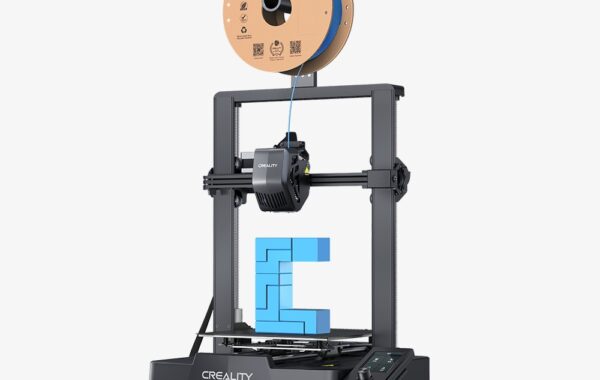
The Creality Ender 3 V3 SE is an excellent entry-level 3D printer that offers fantastic value for its price. With a sturdy build and reliable performance, this printer is perfect for those who want to explore the world of 3D printing without breaking the bank. It has a user-friendly interface and is known for its stability and print accuracy. The Creality Ender 3 V3 SE is a popular choice among beginners and experienced users alike.
2. Prusa MINI+ from Prusa Research
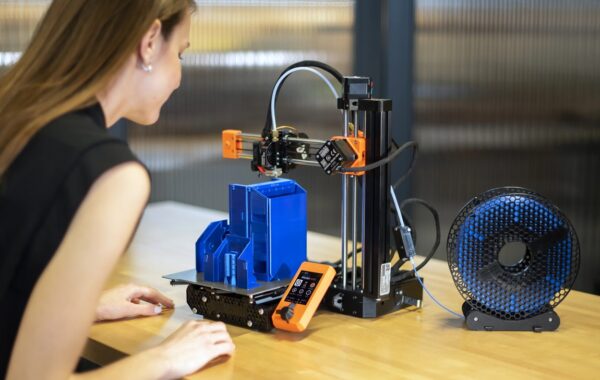
The Prusa MINI+ from Prusa Research is renowned for its exceptional reliability and strong community support. Designed with beginners in mind, this printer has a user-friendly interface and intuitive software that makes the printing process a breeze. The Prusa MINI+ offers high-quality prints and excellent build quality. It also receives regular firmware updates, ensuring you’ll always have access to the latest features and improvements.
3. Bambu Lab A1 and A1 Mini
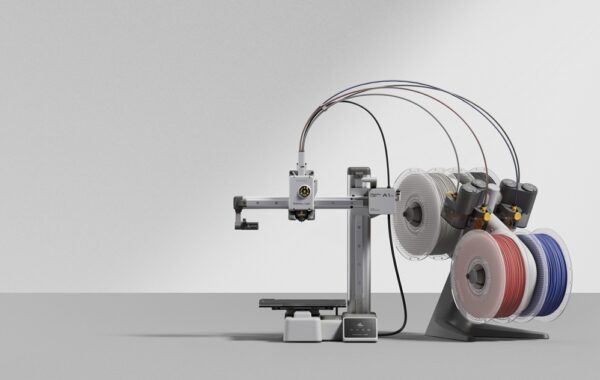
The Bambu Lab A1 and A1 Mini printers are fantastic options for users prioritising convenience and reliability. These printers are known for their fast printing speeds and consistent print quality. While they may not be as tinker-friendly or open-source as some other models, they offer a streamlined printing experience that requires minimal tinkering. The Bambu Lab A1 and A1 Mini are perfect for hassle-free printing right out of the box.
Remember, these are just a few of the many excellent options available for beginners. Consider your specific needs and preferences when choosing a printer, and don’t hesitate to seek advice from the vibrant 3D printing community. Happy printing!
Testing and Evaluation of 3D Printers for Beginners
When finding the right 3D printer for beginners, thorough testing and evaluation are essential. To ensure you make the best choice, it’s important to consider various factors that contribute to a user-friendly and high-quality printing experience.
Factors to Consider
During the testing and evaluation process, several key factors must be examined:
- Hardware Quality: Assessing the printer’s overall build quality, including its components’ durability and reliability.
- Ease of Setup: Evaluating how straightforward and intuitive the initial setup process is, ensuring beginners can get started quickly.
- Bundled Software: Analyzing the software provided with the printer, including its user interface, functionality, and compatibility with different operating systems.
- Appearance and Accuracy of Prints: Examining the quality of printed objects in terms of their visual appeal and dimensional accuracy.
- Repairability: Considering how easily the printer can be repaired or maintained, including the availability of spare parts and access to technical support,.
- Company and Community Support: Assessing the level of customer support the manufacturer provides and the presence of an active and helpful user community.
Additionally, test prints play a crucial role in the evaluation process. These prints are used to analyze the printer’s performance in specific areas, including:
- Ability to bridge gaps and create accurate shapes
- Handling of overhangs and complex geometries
- Print speed and consistency
- Temperature control and stability
- Compatibility with various materials and filaments
The overall user experience is also considered, considering factors such as the clarity of assembly instructions and the intuitiveness of the printer’s interface.
By carefully examining these factors and conducting thorough testing, you can make an informed decision when choosing a 3D printer for beginners.
Our Top Pick: Bambu Lab A1 Mini

Regarding beginner-friendly 3D printers, our top recommendation is the Bambu Lab A1 Mini. This user-friendly printer offers a seamless setup and operation process, requiring minimal assembly and providing a guided setup experience. Whether you’re a novice or an experienced user, the A1 Mini consistently delivers high-quality prints, regardless of the model’s size or layer height. Its compact design and small footprint make it an ideal choice for desktop use.
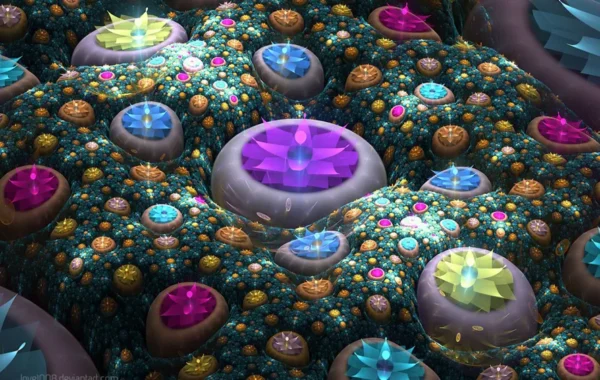
The Bambu Lab A1 Mini stands out for its easy-to-use features, making it a perfect fit for beginners. The printer’s simplified interface and intuitive controls ensure a smooth printing experience. With its reliable performance and consistent print quality, the A1 Mini eliminates common frustrations associated with 3D printing, making it a beginner-friendly option. The printer’s filament compatibility and settings versatility allow users to explore a wide range of print materials and experiment with various projects.
Key Features of the Bambu Lab A1 Mini:
- User-Friendly Setup: The A1 Mini’s guided setup process and minimal assembly requirements make it accessible even to those new to 3D printing.
- Consistent Print Quality: The printer delivers high-quality prints with precise details, ensuring excellent outcomes regardless of the intricacy of the design or the chosen print resolution.
- Compact Design: Designed with space-saving in mind, the A1 Mini’s compact size allows it to fit easily on most desktops, making it a convenient addition to any workspace.
- Easy Filament Compatibility: The printer supports a wide range of filaments, allowing users to experiment with different materials and achieve desired project outcomes.
- Reliable Performance: The A1 Mini excels in performance and reliability, delivering consistent and accurate prints with minimal errors or interruptions.
With its exceptional user-friendliness and reliable performance, the Bambu Lab A1 Mini is an excellent choice for beginners and enthusiasts alike. Whether you wish to explore the basics of 3D printing or embark on more ambitious projects, this printer offers a seamless experience from start to finish, ensuring high-quality prints every time.
| Pros | Cons |
|---|---|
|
|
Alternative Options for Beginners
In addition to our top pick, the Bambu Lab A1 Mini, there are several other affordable and beginner-friendly 3D printers available on the market. These options provide excellent print quality, fast printing speeds, and good community support.
Creality Ender 3 V3 SE: This budget-friendly printer offers a great entry point for beginners exploring the world of 3D printing. It offers dependable functionality and is supported by a helpful community.
Prusa MINI+: Known for its reliability and strong customer support, the Prusa MINI+ is a reliable choice for beginners. It offers a simple setup process and consistently delivers high-quality prints.
Bambu Lab P1S: With its fast printing speeds and good print quality, the Bambu Lab P1S is a popular choice among beginners. It offers an easy-to-use interface and a compact design, making it suitable for small spaces.
Bambu Lab X1-Carbon: Another option from Bambu Lab, the X1-Carbon offers fast and accurate printing capabilities. It is beginner-friendly and produces high-quality prints, making it a reliable choice for beginners.
| Printer | Price | Features |
|---|---|---|
| Creality Ender 3 V3 SE | $179 | – Budget-friendly – Good community support – Reliable performance |
| Prusa MINI+ | $495 | – Known for reliability – Strong customer support – Simple setup process |
| Bambu Lab P1S | $399 | – Fast printing speeds – Good print quality – Easy-to-use interface |
| Bambu Lab X1-Carbon | $1199 | – Fast and accurate printing – Reliable – High-quality prints |
When considering these alternative options, it’s important to compare the features, price, and overall user experience to find the best fit for your needs. Each printer offers unique strengths and capabilities, so take the time to evaluate which one aligns with your specific requirements and budget.
What to Consider in the Future
- Filament or Resin: FDM (Fused Deposition Modeling) Printers: The primary ongoing cost is filament for FDM printers. PLA filament is generally affordable, while speciality filaments (like PETG, ABS, or flexible materials) may cost more. Resin Printers: Resin printers use liquid resin, which can be more expensive than filament. Resin prices vary based on quality and brand.
- Electricity: Running a 3D printer requires electricity. The cost depends on your local rates and how often you print. Energy-efficient printers consume less power.
- Nozzle and Bed Wear: The printer’s nozzle and heated bed may wear out over time. Replacing these components occasionally is an ongoing cost.
- Maintenance and Upkeep: Regular maintenance ensures optimal performance. Lubricating moving parts, cleaning the nozzle, and checking belts are essential. If you encounter issues, repairs or replacement parts may be necessary.
- Print Failures and Waste: Failed prints result in wasted filament or resin. Proper calibration and troubleshooting can minimize this. Prototyping and experimenting may lead to more waste initially.
- Upgrades and Accessories: Upgrading your printer (e.g., adding auto-leveling, dual extruders, or enclosure) can enhance functionality but comes with costs. Accessories like spatulas, cleaning tools, and extra nozzles may be needed.
- Software and Design Tools: While not directly related to printing, software licenses (for slicing software) and design tools (like CAD software) have ongoing costs.
- Post-Processing Supplies: Sandpaper, paint, glue, and other materials for post-processing (smoothing, painting, and assembling) contribute to costs.
- Time and labour: Your time spent designing, slicing, and monitoring prints are valuable. Consider it an indirect cost.
- Storage and Filament Dry Boxes: Properly storing filament (especially hygroscopic materials like nylon) requires dry boxes or containers with desiccants.
Remember that while 3D printing has ongoing costs, it also provides the flexibility to create custom objects and prototypes, which can be cost-effective compared to traditional manufacturing methods. Happy printing! 🖨️💡
Conclusion

Several important factors must be considered when finding the best 3D printer for beginners. Ease of use, reliability, support, and budget are all key considerations that can help guide your decision. After careful evaluation, our top recommendation is the Bambu Lab A1 Mini.
The Bambu Lab A1 Mini offers an exceptional user-friendly experience, making it ideal for beginners. It consistently produces high-quality prints with precision and accuracy, regardless of the model’s size or layer height. Additionally, the A1 Mini has a small footprint, making it suitable for most desktops.
However, it’s important to note that other options may better suit your specific needs and preferences. When deciding, consider community support, price, and overall user experience. Ultimately, the best 3D printer for beginners will depend on your individual requirements and goals.
FAQ
What should I consider when choosing a 3D printer for beginners?
When choosing a 3D printer for beginners, it’s important to consider factors such as ease of use, reliability, support, and budget.
What makes a good beginner’s 3D printer?
A good beginner’s 3D printer should be easy to use, reliable, and well-supported. It should have features such as machine feedback, automation, and presets to make the printing process easier for beginners.
What factors should I consider when choosing a beginner’s 3D printer?
Factors to consider when choosing a beginner’s 3D printer include the printer’s ease of setup, bundled software, and the availability of replacement parts. It’s also important to compare the details of different printers, such as their print quality, print speed, and compatibility with different filaments.
Which 3D printers are recommended for beginners?
Some recommended 3D printers for beginners include the Creality Ender 3 V3 SE, Prusa MINI+, Bambu Lab A1, and Bambu Lab A1 Mini. These printers offer a combination of value, reliability, and user-friendly experiences.
What is involved in testing and evaluating 3D printers for beginners?
Testing and evaluating 3D printers for beginners involves examining factors such as hardware quality, ease of setup, bundled software, appearance and accuracy of prints, repairability, and company and community support. Test prints are conducted to assess the printer’s performance and speed, as well as its ability to handle different materials.
What is the top pick for a beginner’s 3D printer?
Our top pick for a beginner’s 3D printer is the Bambu Lab A1 Mini. It offers ease of setup and operation, consistently produces high-quality prints, and has a user-friendly experience.
What are some alternative options for beginner-friendly 3D printers?
Some alternative options for beginner-friendly 3D printers include the Creality Ender 3 V3 SE, Prusa MINI+, Bambu Lab P1S, and Bambu Lab X1-Carbon. These printers offer different features and capabilities at various price points.
What should I consider in the future regarding 3D printing for beginners?
As technology continues to advance, there will likely be new options and improvements in the field of 3D printing for beginners. It’s important to stay informed about the latest developments and compare the features and capabilities of new models. Regular maintenance and care for your 3D printer will ensure its longevity and consistent performance.
What are the best 3D printers for beginners?
The best 3D printers for beginners include the Bambu Lab A1 Mini, Creality Ender 3 V3 SE, Prusa MINI+, Bambu Lab A1, and Bambu Lab P1S. These printers offer user-friendly experiences, reliability, and good print quality.

